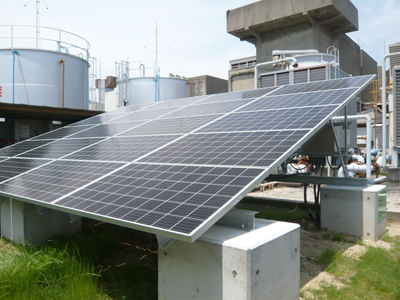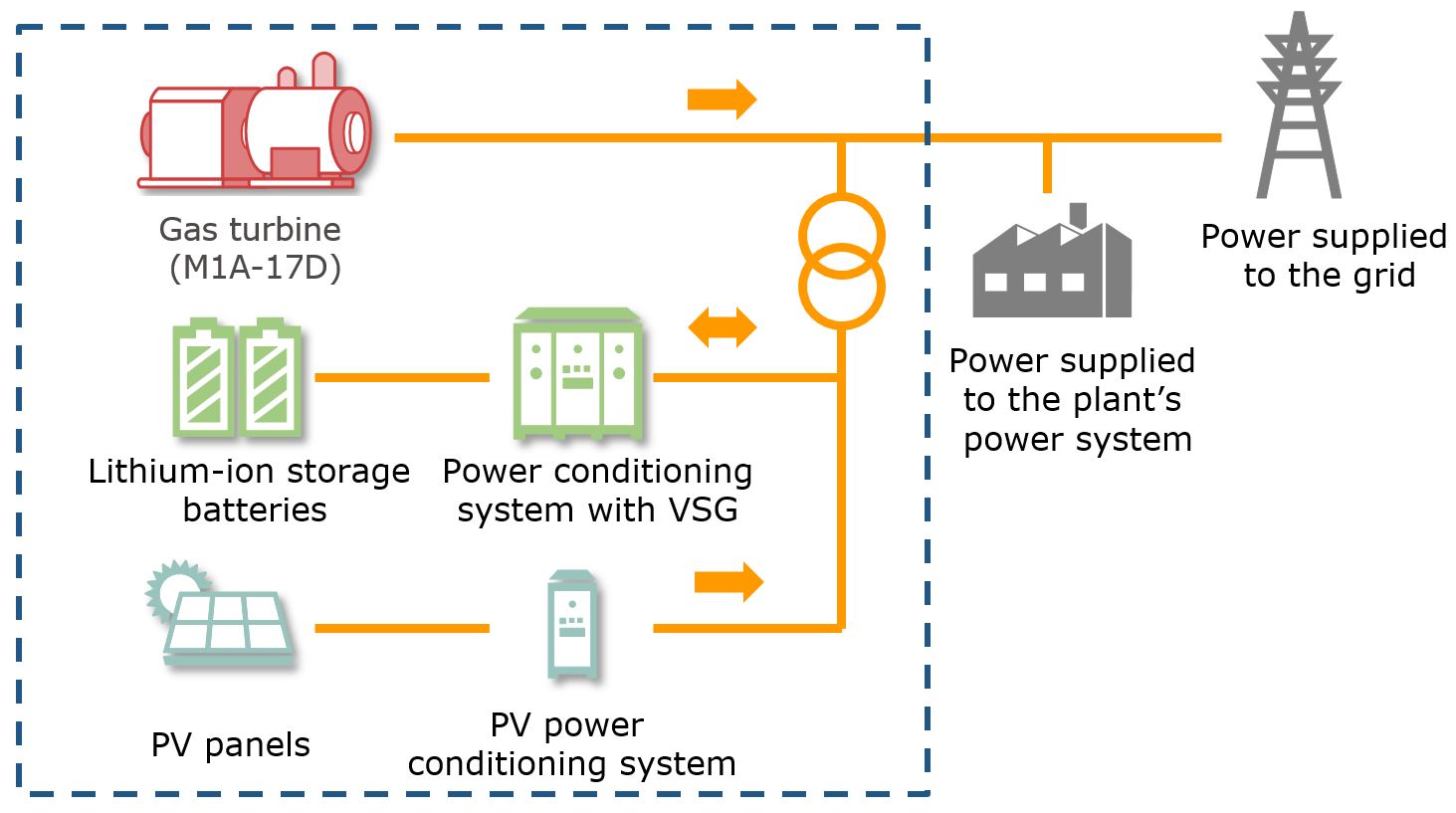Battery Storage Hybrid System Verification Test Begins at Akashi Works’ Distributed Power Generation Facility
Jul. 19, 2021
 |  | ||
| |
| ||
Tokyo, July 19 2021 — Kawasaki Heavy Industries, Ltd. announced today that a verification test for a battery storage hybrid system (hereinafter “the System”) has begun at its Akashi Works, combining the plant’s distributed power generation system equipped with Kawasaki’s M1A-17D high-efficiency gas turbine, lithium-ion storage batteries, and photovoltaic (PV) panels.
The System is designed to optimize energy supply for a user’s variable heat and power needs, by recovering waste heat generated during gas turbine power generation, supplying power generated by the PV system and gas turbine, and by optimized charging and discharging of the lithium-ion storage batteries.
Features of the System
1) Saves energy by storing excess electricity
| ・ | The gas turbine generates heat and electricity on demand, and can provide excess electricity to charge the storage batteries when electricity demand is low. The batteries can then provide electricity when demand is high. Our further aim is to support the user’s effective sale of excess electricity from the System. |

2) Equipped with virtual synchronous generator (VSG)*1 control
| ・ | Off-grid operation while coordinating renewable energy sources by simulating the characteristics of a generator. |
| ・ | Instantaneous switching from grid-connected operation to off-grid operation provides an uninterrupted electricity supply. |
3) Supports business continuity planning (BCP)
| ・ | In case of power outages, the batteries can supply electricity to the gas turbine generator’s auxiliary systems to enable starting up in a blackout. |
| ・ | Electricity can be supplied to areas affected by a blackout, using renewable energy, gas turbine power generation, and the storage batteries. |
4) Accommodates planned value balancing*2
| ・ | Planned value balancing is made possible through the monitoring and control of the storage battery system, and by an integrated control system that coordinates the gas turbine and storage batteries. |
In addition to confirming the system's stability and operability, the verification test will also evaluate the virtual synchronous generator (VSG) developed in-house to realize off-grid operation in cooperation with renewable energy. Optimal control of the storage batteries and gas turbine power generation in this system will enable the installation personnel to make effective use of renewable energy (e.g., PV), as its power output fluctuates with the weather conditions, and increase profits by selling excess electric power to the balancing market*3.
Leveraging the knowledge gained through the verification test, Kawasaki plans to develop products and systems with smaller environmental footprints to meet market needs, and accelerate the transition to a low-carbon and decarbonized society, thereby contributing to improvement of the global environment.

Specifications
| Main components | Capacity | |
|---|---|---|
| PV power generation | 5 kW | |
| Storage battery system | Storage batteries | 35.3 kWh |
| Power conditioning system (PCS) | 50 kW | |
| Gas turbine | 1,770 kW | |
| *1 | A control method for the power conditioning system (PCS) which, using software, simulates the characteristics of synchronous power generators. Like a generator, it is capable not only of charging/discharging but also of off-grid and grid-connected operation, without limit on the number of generating units. Because it provides synthetic inertia to the power grid, it contributes to the stabilization of the grid in the process of making renewable energy the country’s main power source. Compliant with grid-interconnection code JEAC9701-2019. Japanese Patent 5956991. |
| *2 | A system by which power producers and retailers operate according to their electricity generation and procurement plans submitted to the Organization for Cross-regional Coordination of Transmission Operators, JAPAN (OCCTO). |
| *3 | A Japanese market launched in April 2021 in which power needed to balance supply and demand for the entire country can be traded. |
Contact
If you need more information about our business,
please feel free to contact us.





